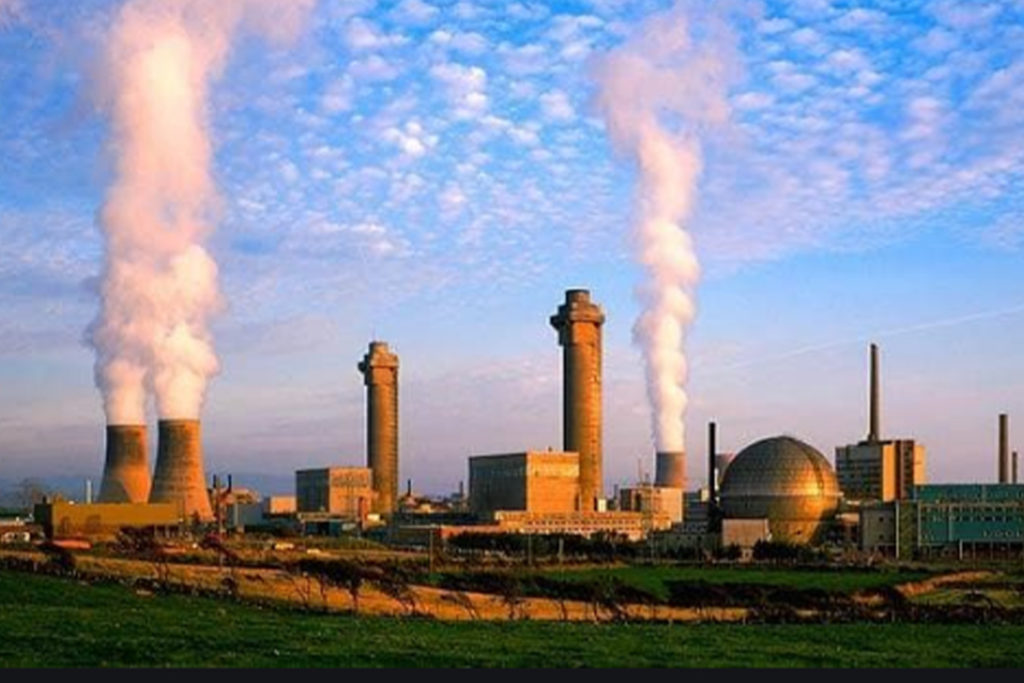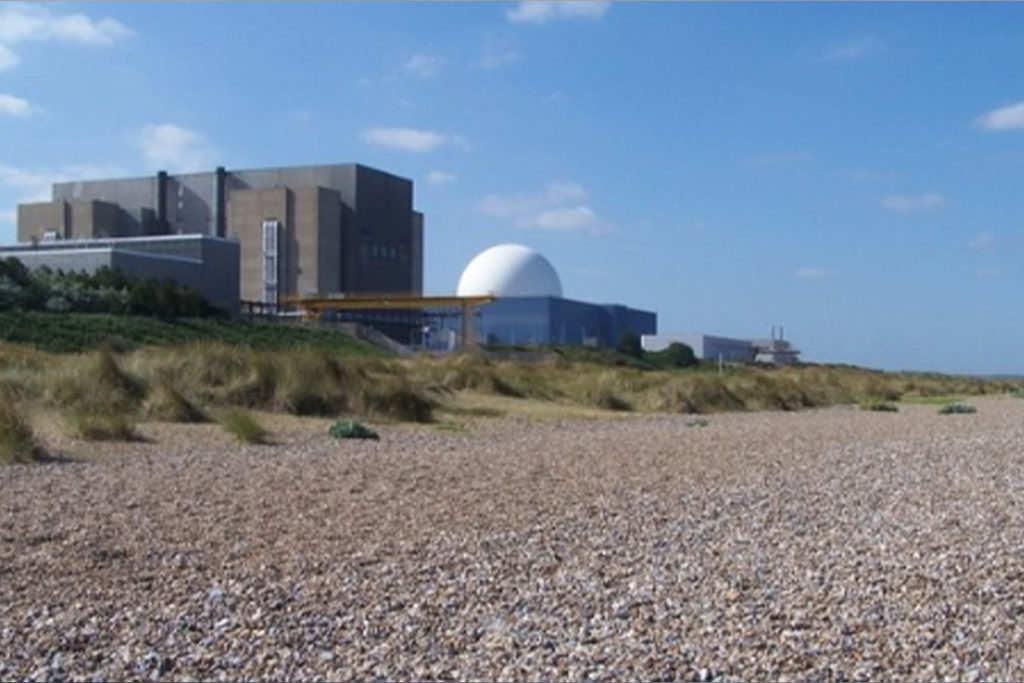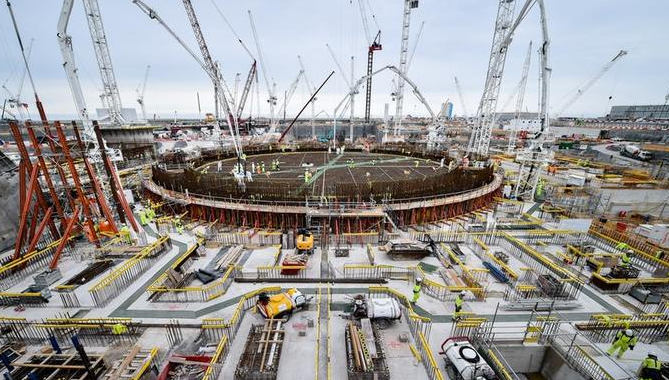Greenpeace and other green energy pressure groups are convinced that the UK can keep the lights on and reach net-zero carbon emissions by renewable energy alone. However, Belong did some investigating and found out that if Britain is serious about reaching net zero by 2050 and keeping the lights on, then nuclear is the only feasible way of doing this.
A Proud Nuclear History
Back in the 1980s, the UK used to be a leader in nuclear technology. The Advanced Gas-Cooled Reactors built in the 1970s and 80s still provide around 20% of Britain’s electricity but by 2030 all but one of the ten remaining nuclear power stations in the UK are due to close.
Vast reserves of cheap natural gas from the North Sea came on tap in the 1980s and the ’90s saw a huge growth in natural gas power stations. This was part of the reason successive Labour and Conservative governments didn’t put the investment into nuclear and Britain soon lost out to competitors in France, Japan, Korea, China, and Russia.
“The UK completely dropped the ball in the 1990s on the nuclear issue. Other countries have not done so. And it’s interesting to look around the world. China knows that it can’t solve its pollution and emissions problems without nuclear,” Tim Yeo, former Conservative MP and now chairman of the thinktank the Pro Nuclear Watch Institute, told Belong in an exclusive interview.
The only way to get new nuclear power capacity back into the UK is to tender for huge foreign companies to use their own designs.
“The only way to get it back is to go for really big volume and even then, I think now it would cost more for us to do it ourselves than to accept the fact that the Chinese and the Russians and the Koreans are way ahead of us now,” added Yeo.
Renewables Can’t Fill the Gap
The past two decades have seen impressive growth of renewables in the UK, particularly in offshore wind where the UK is now a world leader. But virtually everyone involved in energy policy, apart from die-hard green energy campaigners, realise that renewables alone cannot guarantee that the UK can generate carbon-free electricity.
The problem with renewables is that they are variable. In the UK they mainly consist of wind and solar and these power sources are dependent on wind conditions and when the sun is shining. Only nuclear power can provide firm, continuous power which is low carbon and always on stream.
“We could, of course, hope that by 2030 there will be a breakthrough in electricity storage technology, just as we can hope that there will be a big breakthrough in carbon capture and storage, but to make policy in the face of an existential threat to the human race on the basis of a technology breakthrough that hasn’t happened yet would be risky and grossly irresponsible,” said Yeo.
Electricity Storage Still Way Off
If the UK decides to go for very high energy generation from renewables, then even if there was no wind for just a week, it would cost a trillion pounds to build and operate a battery that would be capable of backing that up and providing power during that week of no wind Ieuan Williams, from the Nuclear Industry Association (NIA), the trade body for all nuclear power in the UK, told Belong in an exclusive interview.
“In terms of the sheer amount of batteries that you would need. It’s a very, very long way off. You are talking about an almost unimaginable amount of batteries,” he said.
The only technology currently available to store electric power in any quantity are lithium-ion batteries and although their cost has fallen dramatically in the past few years, they are still very expensive. The cost of producing them has levelled off and isn’t going to get any cheaper if you factor in the actual cost of lithium and the mining process involved in obtaining it. This makes nuclear the only realistic option for the time being.
Why is Nuclear Generated Electricity Still Relatively Expensive?
The first nuclear power station to be built in the UK since the mid-1990s, Hinkley Point C (HPC) in South West England, is the most expensive power station built anywhere in the world to date at £20 billion. It is expected to be operational by 2025 and the electricity it produces will cost around £90 per megawatt-hour for 35 years to pay for its massive construction costs. However, a closer look at the facts reveals that like for like, it’s not that expensive.
Offshore wind, which is the most rapidly expanding area of growth in UK electricity generation, is overall more expensive than nuclear.
The world’s largest offshore wind farm, Hornsea 1, which came on stream earlier this year, generates electricity for £158 per megawatt-hour, which is £60 more than Hinkley.
“Even the most expensive nuclear power station of all time, which is Hinkley Point C, is still far cheaper than offshore wind,” stressed Yeo.
But although Hinkley Point C is cheaper than a lot of offshore wind, it’s still expensive. This is because it is the first nuclear power station to be built in the UK for three decades and so the entire supply chain must be built from the ground up.
Secondly, the financing mechanism through which HPC is being funded is flawed and will not be repeated by the government for other important infrastructure projects in the UK. The money to guarantee HPC is being privately raised through what is known as a Contract for Difference (CfD). In practice, this means that investors have to put down a lot of money upfront and have to wait a long time before they get any return.
This was unpopular among investors, industry specialists and consumers and so earlier this year the government launched the so-called Regulated Asset Base (RAB) consultation. Unlike with the previous Contract for Difference, with RAB investors start to see a return on their investments during the construction phase, and therefore the interest on the debt is begun to be paid off during the construction phase.
The RAB model is currently being tried out for the first time on the Thames Tideway Tunnel, a new sewer in central London, and will almost certainly be used in financing the next nuclear power stations after Hinkley.
“The National Audit Office recommended that the financing structure used for Hinkley was not the best way forward, that the government should look at a better alternative, which would produce a better deal for the consumer and that was why the government came up with the RAB proposal, which is supported by the industry,” Peter Haslam, Head of Policy at the Nuclear Industry Association (NIA), told Belong in an exclusive interview.
New nuclear power stations are planned at Sizewell in Suffolk and Bradwell in Essex. Sizewell C will be built by EDF, the French multinational that is building Hinkley. Bradwell will be built by CGN, China’s state energy company, who are very keen to get a foothold in the European nuclear energy market, with their own home-grown reactor. These two power stations will almost certainly go ahead. They will also be cheaper to build than Hinkley and will produce electricity at around £60 per megawatt-hour.
However, other sites given the go-ahead for new nuclear power stations are at Moorside in Cumbria, Wylfa in north Wales and Oldbury in Gloucestershire, which were due to be developed and built by the Japanese energy giants Toshiba and Hitachi respectively.

Both of them have suspended development of the projects because of funding concerns but may come back to the table with the British government if the RAB financing model is proved successful. KEPCO the South Korean nuclear company is also interested in developing these sites if they can come to a favourable deal with the British government about financing.
The UK nuclear industry and its supporters believe that the UK offers a large number of advantages to foreign investors willing to build nuclear power stations here.
“The UK has some tremendous advantages; we have a large number of sites licenced for nuclear plants and we have a public that is quite supportive of nuclear. All most everyone that lives near a nuclear plant is supportive of them,” said Yeo.
Yeo believes that instead of building just two or three new nuclear power stations, we should commit to building 10 and that this would provide enormous cost savings in the long run. His view is shared by Williams and Haslam at the NIA. They both told Belong that once Brexit is sorted out, they will be lobbying hard to get on with it and give nuclear power in the UK the necessary priority and support.
Why Can’t the UK Build our own Reactors?
Successive UK governments starved the nuclear industry of investment and support for decades and Britain is now in no position to develop large nuclear reactors.
However, the situation is quite different with Small Modular Reactors (SMRs), where Britain is taking a lead over most other countries except for the USA.
SMRs are being led by the Rolls Royce consortium and are 4th generation Pressurised Water Reactors (PWRs) with a generating capacity of around 440 megawatts. This is equivalent to Britain’s first-generation Magnox reactors built in the 1960s and one reactor is capable of providing enough electricity for a small city. Rolls Royce is lobbying the government for further funding to develop their design further and make it market-ready, but like in many other things in the UK, political interest and time has been distracted by Brexit.
“We’re caught up in the bigger political picture. There hasn’t been a minister around to sign off on it. We’re trying to press the new minister, whoever it is, we haven’t been told yet who it is, that an announcement on this will be very welcomed by the industry as soon as possible,” said Williams.
Tim Yeo warned that the government can’t afford to blow hot and cold on SMRs if they want to see this home-grown British technology developed into a viable, commercial enterprise.
“These decisions are very long term. Companies won’t commit the money if they are not sure the government is going to continue its backing,” he said.

Committing to Net-Zero Makes Nuclear Only Realistic Option
Right at the end of her premiership in June, the former British Prime Minister, Theresa May, introduced a legally binding bill in the House of Commons to commit the UK to net-zero carbon emissions by 2050. This is an extremely ambitious target and most industry specialists are clear-eyed about how this can be achieved. One of the only ways is to build a lot more nuclear now.
“Net-zero really does change everything, the energy trilemma is back in terms of what is available to us to keep the light on and hit net-zero by 2050,” said Williams.
Right now in the UK, around 50% of electricity is produced by low carbon means by a combination of nuclear and renewables. Net-zero would mean that all electricity would have to be produced from carbon-free sources but there will also need to be much more electricity generation than there is now.
“The other thing is that if we are going to go to net-zero carbon, then it’s not just the electricity supply that needs to change, its transport and industry and goodness knows what else,” explained Haslam.
The impact of using much fewer fossil fuels in transport and industry means much more electricity generation, perhaps double what we use now, all of which needs to be low carbon.
“That means four times as much low carbon generation as we have at the moment and nuclear must be a significant part of that,” Haslam added.
The Belong view is that the government needs to get its act together on nuclear as renewables alone don’t have a hope of meeting the UK’s low carbon energy needs. As well as providing a better value financing structure for new-build nuclear, the government should tender for more power stations than it currently has considered to further bring costs down by economies of scale. This will entice more of the big foreign nuclear energy companies to the UK. Finally, the government must unequivocally back the British Small Modular Reactor design (SMR) being developed by Rolls Royce so that it can become commercially viable by the 2030s.
Main image from ITV
- Why is California So at Risk from Wildfires? - 13th November 2019
- Carbon Offsetting is Growing but Does it Make a Difference? - 11th November 2019
- Three Confirmed Dead as Australia Prepares for “Catastrophic” Bushfires - 11th November 2019






